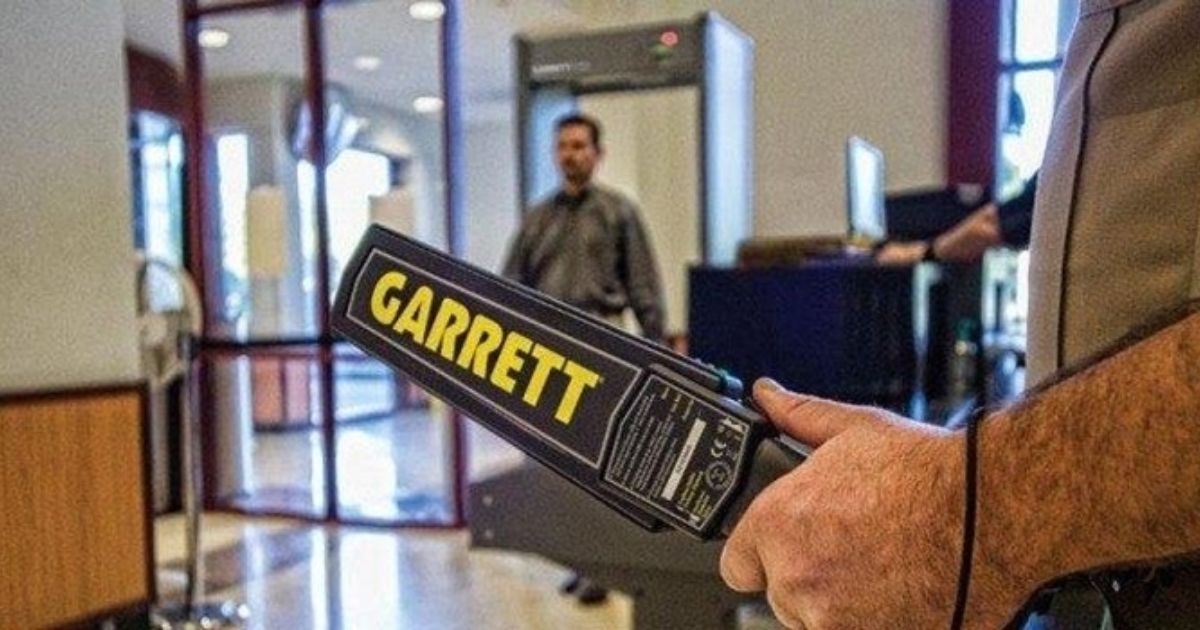A metal detector is a device that uses electromagnetic fields to locate metallic objects. It consists of a coil through which an electric current passes, creating a magnetic field. When the coil approaches a metal object, it induces a secondary magnetic field, alerting the detector to the presence of metal.
Ever dreamt of unearthing hidden treasures or enhancing your security measures? Dive into the world of possibilities with a metal detector Discovering the perfect metal detector is simpler than you think. Whether you’re a budding treasure hunter or looking to upgrade your security, this guide on how to buy a metal detector will lead you through the essentials.
When considering how to buy a metal detector, start by defining your needs whether it’s for treasure hunting, security, or both. Research different models, considering factors like detection depth, sensitivity, and portability. Read user reviews to gauge performance and reliability.
Identifying Your Needs
Identifying your needs is a crucial first step when delving into the world of metal detectors. Begin by clearly defining the purpose behind your purchase—is it for recreational treasure hunting or enhancing security measures? By understanding your specific requirements, you can narrow down the vast array of available options to find a detector that aligns perfectly with your goals. Whether you’re seeking a lightweight and portable device for casual use or a more advanced model with specialized features, this initial stage sets the foundation for a successful and satisfying metal detecting experience.
Once you’ve pinpointed your purpose, delve deeper into the key features that matter most for your intended use. For treasure hunters, factors like detection depth and sensitivity become paramount, ensuring you can uncover hidden gems with precision. On the other hand, if security is your primary concern, a focus on reliability and ease of use may take precedence. Understanding these nuances will not only guide your selection process but also lead to a more fulfilling and effective metal detecting journey tailored to your unique needs.
Defining Your Purpose
Defining your purpose is a crucial first step when considering how to buy a metal detector. Are you an aspiring treasure hunter looking to uncover hidden artifacts and valuables, or are you more concerned with enhancing security measures in your surroundings? Clearly outlining your objectives will guide you towards selecting the most suitable metal detector for your needs. For treasure hunters, a device with high sensitivity and varied detection modes may be essential, while those focused on security might prioritize features like portability and pinpoint accuracy.
Understanding your purpose also involves considering the environments in which you plan to use the metal detector. Whether it’s beaches, parks, or archaeological sites, different detectors excel in various settings. Defining your purpose not only narrows down your options but ensures that the metal detector you choose aligns perfectly with your goals, maximizing its effectiveness and enhancing your overall experience.
Understanding Key Features for Treasure Hunting or Security
When delving into the world of metal detectors, it’s crucial to comprehend the key features that align with your specific purpose, whether it be treasure hunting or security. For treasure hunters, a detector with adjustable sensitivity and discrimination settings is essential. These features allow you to fine-tune your device to focus on valuable metals while filtering out unwanted materials like iron or aluminum. Additionally, a good detection depth is crucial for locating treasures buried deep underground.
On the other hand, those seeking a metal detector for security purposes should prioritize models with advanced target identification capabilities. Look for detectors equipped with multiple detection modes and an ability to distinguish between different metal types. Adjustable audio tones and visual displays also enhance the security aspect, providing clear alerts for various metal objects. By understanding these key features tailored to your specific needs, you can make a well-informed decision when choosing the right metal detector for either treasure hunting or security applications.
Researching Models

In the process of buying a metal detector, researching different models is a crucial step that can greatly impact your overall experience. Begin by exploring the various types of metal detectors available in the market, each designed for specific purposes such as treasure hunting, relic hunting, or security screening. Consider the features that matter most to you, including detection depth, sensitivity, and portability. Some models are optimized for certain terrains or conditions, so understanding these nuances will guide you towards a detector that suits your needs.
Once you’ve narrowed down the types, delve into a detailed comparison of specific models within each category. Look for user reviews and expert opinions to gain insights into the performance, durability, and user-friendliness of each model. This research phase allows you to make an informed decision based on real-world experiences, ensuring that the metal detector you choose aligns perfectly with your goals, whether it’s discovering hidden treasures or enhancing security measures.
Exploring Different Types of Metal Detectors
Exploring different types of metal detectors opens up a fascinating array of options tailored to various purposes. One of the primary distinctions lies in the technology employed, with some detectors utilizing very low frequency (VLF) technology for versatile use in different soil types. VLF detectors are adept at discriminating between different metals, offering a valuable feature for treasure hunters. On the other hand, pulse induction (PI) metal detectors excel in depth penetration, making them ideal for locating objects buried deeper beneath the surface.
Additionally, metal detectors come in specialized forms, such as handheld models for portability or walk-through units for enhanced security screening. Each type caters to distinct environments and applications, whether it’s scanning the beach for lost artifacts or securing public spaces. Exploring the different types allows individuals to pinpoint the features that align most closely with their intended use, ensuring a more effective and satisfying metal detecting experience.
Comparison of Detection Depth, Sensitivity, and Portability
When delving into the world of metal detectors, understanding the nuances of detection depth, sensitivity, and portability is paramount. Detection depth refers to how deep a metal detector can locate objects beneath the surface. It’s crucial to choose a detector with an appropriate detection depth for your intended use, whether it’s shallow water hunting or deep ground exploration. Sensitivity, on the other hand, determines a detector’s ability to detect smaller or deeply buried items.
Portability is another key factor to consider in your decision-making process. The ease with which you can carry and maneuver your metal detector impacts your overall experience. Whether you’re exploring beaches, parks, or more rugged terrains, a portable detector ensures flexibility and convenience. Thus, when comparing detectors, assessing their detection depth, sensitivity, and portability will guide you towards a choice that aligns seamlessly with your metal detecting goals.
FAQ’s
How do I know which metal detector to buy?
To choose the right metal detector, consider your specific needs and intended use. Define your purpose, whether it’s treasure hunting or security.
How much money do you need to buy a metal detector?
The cost of a metal detector varies widely depending on the brand, features, and intended use.
What is a good metal detector to start with?
A good metal detector for beginners is the Garrett ACE 300. Known for its user-friendly interface, lightweight design, and effective discrimination capabilities, the ACE 300 strikes a balance between performance and ease of use.
Conclusion
In conclusion, the journey of acquiring a metal detector involves a careful consideration of various factors, ensuring that your choice aligns seamlessly with your needs and preferences. From defining your purpose and researching different models to delving into user insights, each step plays a crucial role in making an informed decision. The exploration of detection depth, sensitivity, and portability sheds light on the technical aspects that significantly impact the effectiveness of your metal detector.
As you finalize your decision and embark on your metal detecting journey, keep in mind the importance of reputable sources and user reviews. By choosing a detector that resonates with positive experiences and aligns with your specific goals, you set the stage for a rewarding and enjoyable endeavor. Whether you’re a novice in the world of metal detecting or seeking an upgrade, the process of selecting the right metal detector is a thrilling adventure that opens doors to hidden treasures and heightened security.











